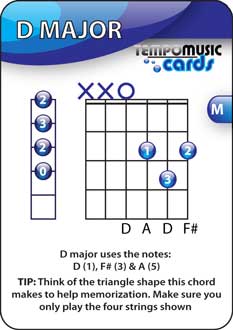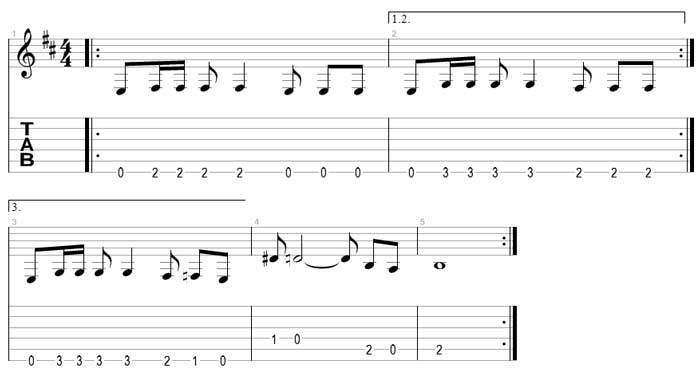You become a great player from the practice you put in. There is no other way. The more time and effort you put in to practicing, the faster you will learn. The way you practice also has a big impact on how fast you develop. This article will tell you why so many guitarists are wasting countless hours with ineffective ‘practice’. By the end of this article you will know how to avoid the most common mistakes people make and how to have the most effective practice session possible. When you apply all this information, you will learn faster and become a better guitarist.
Bad Habits to Avoid When Practicing Guitar
Before you learn what makes an effective practice session, it’s important to understand what to avoid. So many guitarists waste hours and hours every week because they practice guitar the wrong way. Here’s the most common bad habits to avoid when practicing.
1. Spending too much time practicing without a break
This is the most common bad habit guitarists face. Some players think that if they sit down and practice straight for 2+ hours, they will learn faster. The sad truth is that a 2+ hour practice session will do more harm than good and a player practicing for 30 minutes can achieve more.
The reason long practice sessions don’t achieve anything is because your brain can only learn things in small block sized pieces. If you spend five minutes working on a technique, you will remember the whole five minute session and learn from it. On the other hand if you spend two hours working on the same technique, you will probably remember the first five minutes of practice and the last ten minutes. Everything in between becomes a blur because it was such a long practice session. The result is almost two hours wasted.
Key Point: Limit the amount of time you spend practicing one session. Practicing guitar for more than an hour in one sitting will simply waste your time.
2. Spending too much time on one thing
Just like the point above, if you spend too much time on one thing (eg: technique, exercise) your brain will switch off and you wont learn anything. Spending five minutes on one exercise will achieve about 80% of the gains that you would achieve by spending 60 minutes practicing. In other words, you gain 80% of the benefits from the first five minutes, then you need to practice for another 55 minutes to gain an extra 20%. Hardly seems worth it does it?
Key Point: Spending too much time on one technique or exercise won’t help you out. Limit how much time you spend practicing any one topic.
3. ‘Just playing’
A lot of players feel that ‘just playing’ will help them learn fast enough and that spending time practicing is pointless. While it’s important to spend time ‘just playing’, you don’t develop as a player as much from those sessions compared to focused practice. A guitarist who has a focused practice session for 30 minutes a day will learn faster and develop better skills than a player who ‘just plays’ for 30 minutes a day. Even if the ‘just play’ guitarist starts out better, in a years time the guitarist who practices will be far more advanced.
Key Point: ‘Just playing’ is not practicing. While it’s important to have time to just play, you gain far more from focused practice sessions.
Practice Smarter – Not Harder
The aim of these points is to help you learn faster with less work. By focusing your practice sessions you can achieve more in less time. The goal is to practice smarter and achieve more.
1. Have a goal
Before you decide to practice, figure out what you want to develop. Do you want to be able to play faster? Play bends properly? Improve your chord changes? Your first step is to find out what area of guitar you want to improve. This may sound obvious but how often do you actually consider this before you practice? If you decide on a goal before starting to practice, you will focus on the goal more.
Key Point: Set yourself a goal before you start practicing. Having a goal will help you focus which helps you learn faster
2. Start out easy and slow
If you want to learn a solo that’s played fast or is technically challenging, you need to start out slow. Starting out slow will help you control your playing and develop good habits. Once you gain control over the piece, then you can start building up the tempo gradually. The result is you will have more control at a higher tempo. Don’t try to achieve everything straight away, you’re better off starting out slow and easy and building up the tempo and complexity.
Want to play something at 200bpm? Start out at 50bpm and build it up 5bpm at a time. By the time you get to 200bpm you would have played it so many times it will feel easy. Compare that to straight away attempting 200bpm. You will struggle to keep up and it will sound sloppy. Building up the tempo in a controlled way wins every time.
Key Point: Start out slow and easy and build the tempo gradually. It will give you control over your playing.
3. Record yourself
While you’re playing, you’re focusing on technique. This means you can’t really listen to your playing 100%. Listening back to a recording of your playing allows you to listen 100%. You will notice things you didn’t while playing such as mistakes. Record yourself and play it back and you might be surprised how different you sound compared to what you think you sound like. The reason it’s so important to do this is because it lets you know how you’re going. If you save your recordings you will be able to keep track of your improvement over time. You will also be able to discover any faults in your playing you never notice while actually playing.
After you finish a practice session, record yourself playing whatever you want (eg: improvise or play a section from a song) then listen back to the recording. Be honest with yourself and analyze your playing. What do you like about it? What needs more work? Write it down and that can be your goal for the next practice session.
Key Point: Record yourself regularly to keep track on your progress
4. Vary your practice session
It’s important that you don’t repeat the same things over and over every practice session. Not only will it quickly become boring, but you won’t develop as a well rounded player. If today you spent a lot of time practicing chord changes, tomorrow practice something else such as scales. Then you can come back to chord changes the following day. By varying what you practice, you constantly push in different areas and learn faster. Practice sessions will be more interesting because you will always be doing something new.
Key Point: Keep changing your focus and work on different things. You will become a more well rounded player as a result.
5. Keep practice sessions short and repeat regularly
This is the biggest key to success. As mentioned earlier, spending too much time doesn’t automatically mean you learn more. You’re actually better off to have very short practice sessions and repeat them regularly. Spend 20 minutes practicing then have a 5 minute break. Then come back and do another 20 minute session. You will actually be better off practicing this way compared to a 60 minute practice session. Split your practice time up in to short blocks. You will remember more, be able to focus more and will achieve more.
Key Point: A short practice session repeated regularly will always be more effective than a long once off practice session.
6. Practice every day
Make it a goal to practice every day. Even if you can only practice for 5 minutes some days, you will still be better off. Do everything you can to make sure you don’t miss a single day. By practicing every day you will get better every day. Practicing once or twice a week is a slow way to learn because you will have 5-6 days every week where you don’t improve. In fact, every day you don’t practice you’re actually going backwards. You will slowly forget things when you don’t regularly practice.
Key Point: Practice every day without fail even if it’s only for five minutes. Any day you don’t practice you’re actually going backwards.
What to Practice
Now that you understand what you need to do to practice guitar effectively, have a read on what to practice. The two articles below will give you ideas on what to do in your practice sessions:
Ideas for your practice sessions – Gives you plenty of ideas and tools to use in your practice sessions
Five core tips to get the most out of your practice session – Focuses on five areas that will have a big impact on your development








